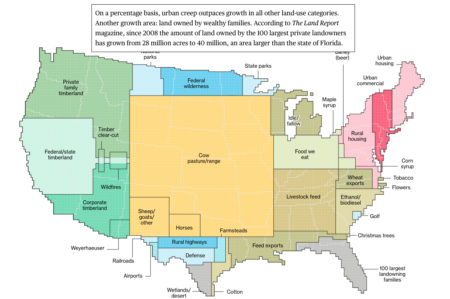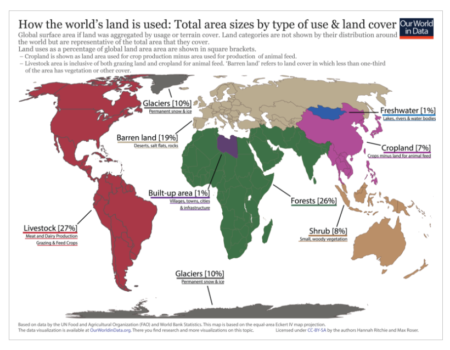- The hidden treasure of Colombian potatoes. In a lad mag, no less.
- Umbrian olive terraces get UN status, no less.
- Maize furniture, no less.
- New wild tea species found. In protected areas, no less.
- Saving the dreadlocked Suri alpaca of Peru through spinning.
- Saving the banana through lots of things.
- Seed banks for restoration, but also so much more.
- Even in space. No less.
- But don’t forget to safety duplicate .
- Seed Treaty scores important first, explained. I hope.
Brainfood: Rye genus, Purple carrots, Breed conservation contracts, Livestock breeding, USDA sweetpotatoes, Apple breeding, Olive breeding, Landrace nutrition, Trade and SDG 2.5, Medicinal legumes, Tea in China, Non-rhizobia, Fungal cryo, Barcoding NUS
- Phylogeny and genetic structure in the genus Secale. The perennial species is different from the annuals, which are divided into an Asian and a non-Asia group and show all kinds of introgression.
- Consumers’ acceptance of a local landrace: the case of purple carrots. Sure, if produced locally.
- Saving the breeds: German Farmers’ preferences for Endangered Dairy Breed conservation programs. Sure, if they get paid.
- Analysing innovations among cattle smallholders to evaluate the adequacy of breeding programs. Intensification will need more than selection within the local breed. But it’s a start.
- Genetic diversity and population structure of the USDA sweetpotato (Ipomoea batatas) germplasm collection using GBSpoly. 4 clusters: Central American, North American, South American, and others.
- Updated review of potential medicinal genetic resources in the USDA, ARS, PGRCU industrial and legume crop germplasm collections. 22 species have potential.
- Apple (Malus spp.) Breeding: Present and Future. It’s bright, apparently.
- Strategies for Olive (Olea europaea L.) Breeding: Cultivated Genetic Resources and Crossbreeding. There’s an International Olive Council, and it has a Network of Germplasm Banks.
- Genetic flow among olive populations within the Mediterranean basin. Separate Syrian and Algerian genepools.
- Traditional farmers’ varieties: a valuable source of genetic variability for biofortification programs. Back to the future.
- SDG 2.5: How Policies Affecting Trade and Markets Can Help Maintain Genetic Diversity. It’s possible, but not automatic.
- Concept and protection of traditional knowledges in agricultural heritage system: a case study of Pu’er Traditional Tea Agrosystem. Based on 269 pieces of traditional knowledge, and in trouble.
- Mining alfalfa (Medicago sativa L.) nodules for salinity tolerant non-rhizobial bacteria to improve growth of alfalfa under salinity stress. They work even on their own.
- Frozen fungi: cryogenic storage is an effective method to store Fusarium cultures for the long‐term. I guess will also work on the above?
- DNA barcoding to promote social awareness and identity of neglected, underutilized plant species having valuable nutritional properties. Familiarity breeds contentment.
Brainfood: Ecology of domestication, Citizen soybeans, Silkworm domestication, Barley spread, Indigenous management, Maize domestication, Temperate maize, Nutrient yields, Amazon history double, Women & diets, Online classification, Charred breadcrumbs, Wheat drought
- Crop domestication: anthropogenic effects on insect–plant interactions in agroecosystems. Domestication can upset trophic webs. Poor dears.
- The soybean experiment ‘1000 Gardens’: a case study of citizen science for research, education, and beyond. 2492 gardens, in fact.
- The evolutionary road from wild moth to domestic silkworm. Domestication in China, followed by multiple independent spreads and differentiation.
- Barley heads east: Genetic analyses reveal routes of spread through diverse Eurasian landscapes. 3 taxa, 8 genepools, multiple routes for spread. A bit like silkworm but in the opposite direction.
- A spatial overview of the global importance of Indigenous lands for conservation. 40% of all terrestrial protected areas.
- Maize domestication and gene interaction. More than just the headline 5 genes.
- Hallauer’s Tusón: a decade of selection for tropical-to-temperate phenological adaptation in maize. Need to go back to tropical germplasm for adaptation to temperate conditions.
- Moving beyond calories and protein: Micronutrient assessment of UK diets and land use. Roots, tubers and vegetables are the most land-efficient producers of 23 nutrients.
- The legacy of 4,500 years of polyculture agroforestry in the eastern Amazon. It is still with us.
- Direct archaeological evidence for Southwestern Amazonia as an early plant domestication and food production centre. And not just in the east.
- Does women’s time in domestic work and agriculture affect women’s and children’s dietary diversity? Evidence from Bangladesh, Nepal, Cambodia, Ghana, and Mozambique. Yes, but varies with socioeconomic status.
- Remap: An online remote sensing application for land cover classification and monitoring. Use your training set to detect habitat type(s) in Google Earth.
- Archaeobotanical evidence reveals the origins of bread 14,400 years ago in northeastern Jordan. Before domestication.
- Drought tolerance during reproductive development is important for increasing wheat yield potential under climate change in Europe. The good news is that germplasm close to the optimized ideotype for 2050 is already out there.
Feedlots
Brainfood: African rice domestication, Barley evaluation, Al & sorghum, Potato seed systems, Yield trends, Arachis resynthesis, Potato breeding, Lupinus evolution, Helianthus invasiveness, Wild cassava, Beaked maize return, Amaranth breeding, Vegetables, American dogs
- The Rise and Fall of African Rice Cultivation Revealed by Analysis of 246 New Genomes. Domesticated in northern Mali as a result of the decline of wild species due to the drying of the Sahara.
- Unlocking historical phenotypic data from an ex situ collection to enhance the informed utilization of genetic resources of barley (Hordeum sp.). Don’t throw away that historical data from regenerations.
- Exploiting sorghum genetic diversity for enhanced aluminum tolerance: Allele mining based on the AltSB locus. It’s more prevalent in guinea sorghums.
- Unearthing unevenness of potato seed networks in the high Andes: a comparison of distinct cultivar groups and farmer types following seasons with and without acute stress. Potatoes are not just potatoes. And farmers are not just farmers.
- Global patterns of crop yield stability under additional nutrient and water inputs. Higher variability in yield expected under higher fertilizer inputs.
- Segmental allopolyploidy in action: Increasing diversity through polyploid hybridization and homoeologous recombination. Domesticating peanuts, the right way this time.
- Applications of New Breeding Technologies for Potato Improvement. Humble no more?
- Pleistocene glacial cycles drive isolation, gene flow and speciation in the high‐elevation Andes. In Lupinus, phylogeny does not recapitulate orogeny.
- Evolution of invasiveness by genetic accommodation. In a crop wild relative, no less.
- Manihot takape sp. nov. (Euphorbiaceae), a new tuberous subshrub from the Paraguayan Chaco. A crop wild relative too.
- Back to beaked: Zea mays subsp. mays Rostrata Group in northern Italy, refugia and revival of open-pollinated maize landraces in an intensive cropping system. Title of the week. Alternative: Polenta Power.
- From zero to hero: the past, present and future of grain amaranth breeding. Runner up.
- Issues and Prospects for the Sustainable Use and Conservation of Cultivated Vegetable Diversity for More Nutrition-Sensitive Agriculture. Still neglected.
- The evolutionary history of dogs in the Americas. They came over from Siberia with people, rather than evolving from local wolves, but all that’s left of them is a cancer.

